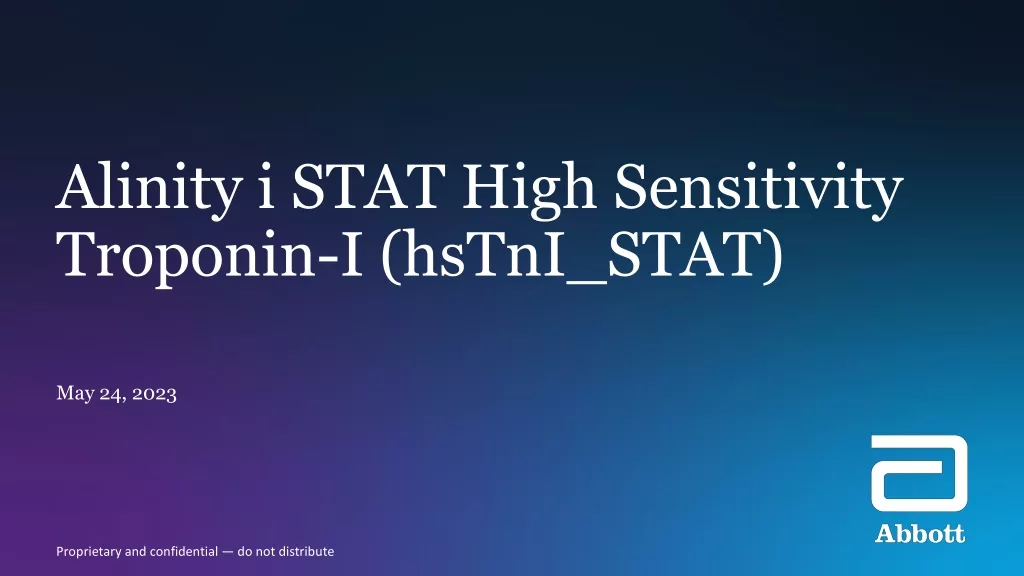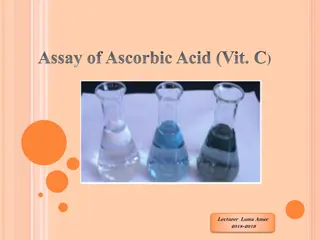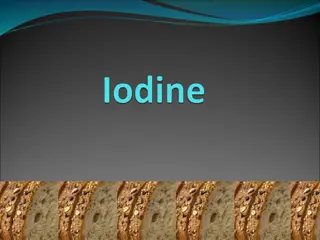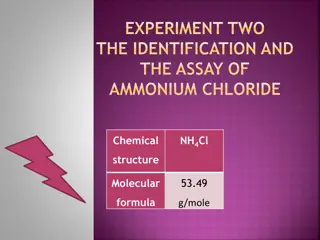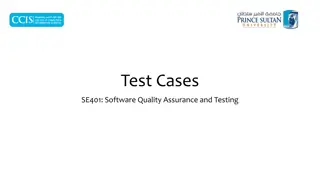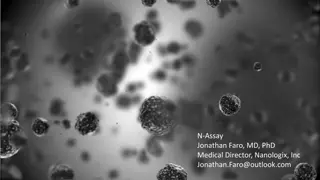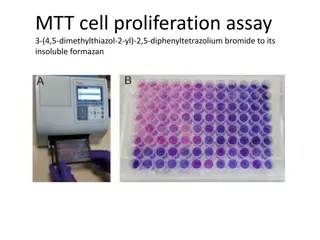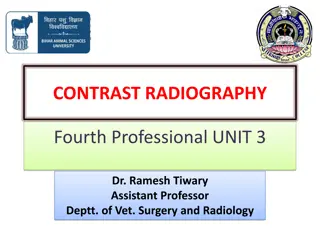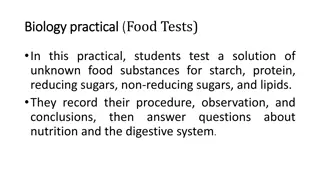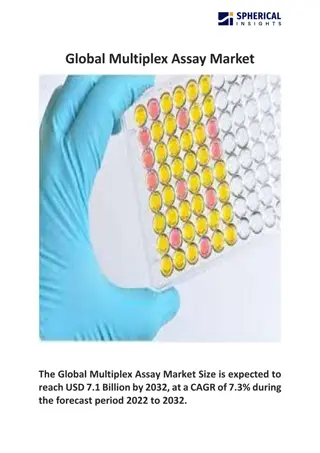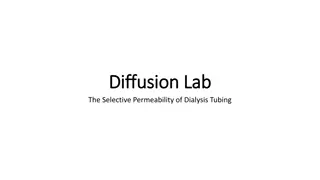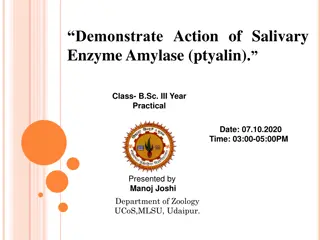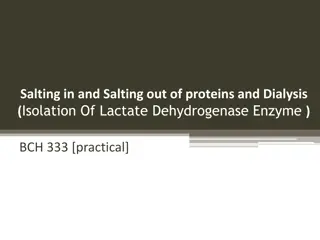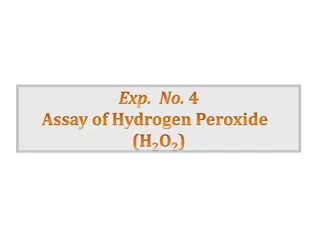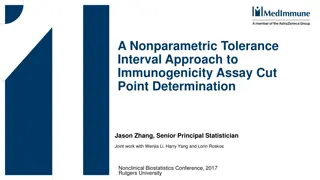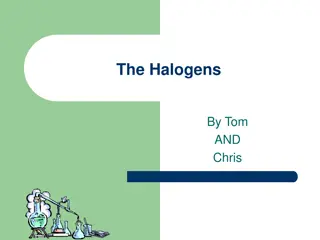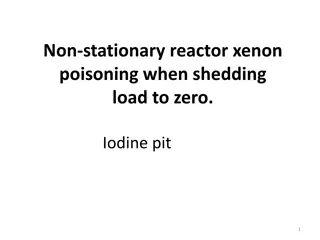Assay Test of Povidone Iodine Solution
"Povidone-iodine (PVP-I) is a stable chemical complex used for its antimicrobial properties. It contains available iodine and is completely soluble in various solvents. Learn about its molecular formula, synthesis, and physicochemical properties."
Download Presentation

Please find below an Image/Link to download the presentation.
The content on the website is provided AS IS for your information and personal use only. It may not be sold, licensed, or shared on other websites without obtaining consent from the author.If you encounter any issues during the download, it is possible that the publisher has removed the file from their server.
You are allowed to download the files provided on this website for personal or commercial use, subject to the condition that they are used lawfully. All files are the property of their respective owners.
The content on the website is provided AS IS for your information and personal use only. It may not be sold, licensed, or shared on other websites without obtaining consent from the author.
E N D
Presentation Transcript
Experiment three Assay test of Povidone Iodine Assay test of Povidone Iodine solution solution File:Povidon-Iod.png
Molecular formula of iodine I2 Introduction: 253.8 Molecular weight g/mole Povidone-iodine (PVP-I) is a stable chemical complex of polyvinylpyrrolidone (povidone, PVP) and elemental iodine. It contains from 9.0% to 12.0% available iodine, calculated on a dry basis.[1] File:Povidon-Iod.png
Is a loose complex of elemental iodine with neutral, amphipathic organic compound Polyvinyl pyrolidone which serves as a sustaned release reservoir of iodine. Note: amphipathic is a molecule containing both polar hyrdophoilic (water soluble) & non polar not water soluble hydrophobic.
Physicochemical properties: Physicochemical properties: PVP-I is completely soluble in cold and mild-warm water, ethyl alcohol, isopropyl alcohol, polyethylene glycol, and glycerol. Its stability in solution is much greater than that of tincture of iodine or Lugol's solution Iodine (I2): Bluish-black crystals. Easily sublimating at normal temperature to give violet-pink gas which is irritating to eye. Sparingly soluble in water solubility can be improved by the addition of KI.
Povidone iodine is soluble in water, even more soluble than I2 itself (Why?).
Synthesis An Iodophor is a preparation containing iodine complexed with a solubilizing agent, such as a surfactant or povidone (forming povidone-iodine). The result is a water-soluble material that releases free iodine when in solution. Iodophors are prepared by mixing iodine with the solubilizing agent; heat can be used to speed up the reaction. Polyvinylpyrrolidon synthese.svg
Lugol's iodine solution Lugol's iodine solution Ingredients 1. Potassium iodide: 10 g 2. Distilled water: 100 ml 3. Iodine crystals: 5 g Preparation A. Dissolve 10 g potassium iodide in 100 ml of distilled water. B. Slowly add 5 g iodine crystals, while shaking. C. Filter and store in a tightly stoppered brown bottle. Storage 1 month Label Lugol's iodine solution; Use by (date
Identification: Description Povidone-Iodine occurs as a dark red-brown powder. It has a faint, characteristic odor. It is freely soluble in water and in ethanol (99.5). The pH of a solution obtained by dissolving 1.0 g of Povidone-Iodine in 100 mL of water is between 1.5 and 3.5(1) To 10mL of diluted starch TS (1 in 10) Add 1 drop of a solution of Povidone-Iodine (1 in 10): a deep blue color develops. To 1 mL of a solution of Povidone-Iodine (1 in 100) add 1 mL of sodium thiosulfate TS, and add 1 mL of ammonium, thiocyanate-cobaltous nitrate TS and 2 drops of 1 molW,L hydrochloric acid TS: a blue color develops, and a blue precipitate is gradually formed. .
Pharmacological uses: Pharmacological uses: Has an antimicrobial action against bacteria, viruses, fungi and protozoa. A key component of thyroid hormones. Plays an important role in mental development. Disinfectant. Use as oxidizing agent...for example to measure ascorbic acid concentration in unknown sample.
Mechanism of action The disinfecting characteristics of iodine arise from its ability to substitute for covalently bound hydrogens in compounds containing - OH, -NH, -SH, or CH functional groups. PVP-I being a polymeric iodophor, reacts with oxygen containing functional groups. The difference between a conventional iodine solution and an iodophor is that the latter carries practically all the iodine in a complexes form, so that the concentration of the free iodine in the solution is always very low. This property has the effect of reducing the drawbacks associated with the presence of elemental iodine i.e. high toxicity, high level of irritation and staining power. 3 Biocidal action: PVP-Iodine is used in both human and veterinary medicine to kill on contact a wide variety of bacteria, viruses, fungi, protozoa and yeasts. The determining factor of the bactericidal action of PVP-I remains the concentration of free iodine.3
Free iodine, slowly liberated from the poviodine- iodine (PVP-I) complex in solution, kills eukaryotic or prokaryotic cells through iodination of lipids and oxidation of cytoplasmic and membrane compounds. This agent exhibits a broad range of microbicidal activity against bacteria, fungi, protozoa, and viruses. Slow release of iodine from the PVPI complex in solution minimizes iodine toxicity towards mammalian cells.
Assay Test (using Assay Test (using Iodometric Iodometric titration): titration): Iodometric titration is an oxidation-reduction titration which involves Iodine as an oxidizing agent...the poor water solubility and the high volatility of iodine is the main issue in the iodometric titration. Iodometry Iodimetry In Iodometry, liberated iodine is titrated with standard solution of thio sulphate. It is an indirect method because iodine is not directly used in titration. This is especially used to determine the amount of oxidizing agent. In Iodimetry, an analyte is directly titrated with the iodine solution. It is a direct method. Iodimetry is used for reducing agent.
The procedure will be as follows: In a conical flask, add 5 ml of 1% Povidone-Iodine solution and 5 ml of 0.1 M HCl, then sufficient water to produce 75 ml solution. Titrate with 0.02 M sodium thiosulfate using 2 ml of starch as the indicator Note: Iodine can be used as self indicator, since there will be a clear change in colour from the dark orange of I2 to colourless I-. To better observe the end point, starch will be added... Starch will form a dark-blue to black complex with triiodide ion (not with either I2or I-).
Important notes: Because the presence of water , hydration of sodium thiosulphate can not be used as primary standard. Reaction is taken place in acidic condition in presence of excess iodide IO3-+ 5I-+ 6 H + Iodate iodide iodine starch solution have to be freshly prepared because it deteriorates quickly on standing. Starch make complex with tri-iodide ion. 3 I2 + 3 H2O
Starch should be added after adding few drops of thiosulfate from the burette (WHY?). If it is added earlier, then some of the iodine tends to remain bound to the starch particles, even after the equivalence point is reached, thus introducing an unwanted error.
Redox titration Oxidation-reduction reactions or Redox reactions involves oxidation and reduction reaction. In other words; it involves the transfer of electrons between two chemical species. One compound in reaction loses an electron, this compound is said to be oxidized and at the same time another compound gains an electron and is said to be reduced. There are specific terms used to describe these chemical species. The compound that is oxidized is called as a reducing agent, while another compound that is reduced is called as the oxidizing agent
It follows that Redox Chemistry can proceed by three types of redox reaction: http://www.emc.maricopa.edu/faculty/farabee/biobk/redox.gif
Some Redox titration involves iodine as an oxidizing agent. If standard iodine is used for the oxidation of a reducing agent (analyte), the method is termed as iodimetry. On the other hand, the indirect presence of iodine in titration in a Redox reaction is called iodometry. Iodine formed a complex ion (triiodide ion) with iodide ion solution. I2+ I-= I3- Here this tri-iodide ion acts as an oxidizing agent and involved in both type of redox titration
Reducing Agents Used in Titrations Reducing Agents Used in Titrations Involving Iodine Involving Iodine Usually Sodium thiosulfate (Na2S2O3) is used as a reducing agent in redox titration involving iodine. The reaction between iodine and thiosulfate is as follows; I2+ 2 S2O32- 2 I-+ S4O62- Iodine+thiosulphate iodide+tetra-thionate Since I2is present as the tri-iodide in aqueous solutions containing iodide , hence reaction can be written as ; I3-+ 2 S2O32- 3 I-+ S4O62- tri-iodide+ thiosulphate tri-iodide + tetra-thionate
Calculations Each ml of 0.02M thiosulfate equivalent to 2.538 mg I2 Note: Povidone-Iodine should contain not less than 9% and not more than 12% of available iodine.


